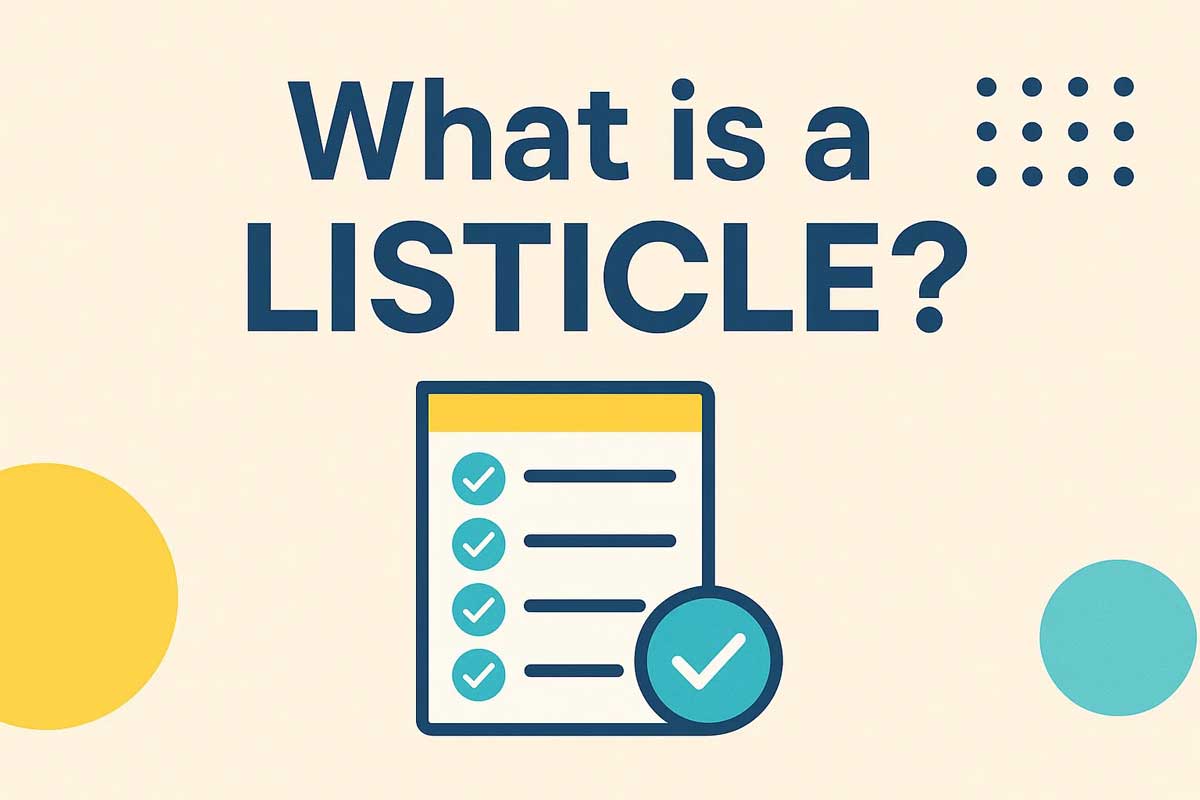Why you should consider writing listicles or creating blogs in a listicle format.
Writing listicles is highly valuable for AI SEO because their clear structure, concise points, and organised formatting make it easy for search engines and AI models to understand, extract, and showcase information—helping your content get discovered more effectively.
1. Choose a Compelling Topic
The first step in creating a successful plan for writing listicles is selecting a topic that resonates with your target audience. To do this, consider your niche and the interests of your readers. A compelling topic should be relevant, timely, and interesting.
– Research Popular Trends: Use tools like Google Trends, BuzzSumo, or social media platforms to identify trending topics within your industry.
– Solve Problems: Think about common challenges your audience faces and how your listicle can provide solutions.
– Be Specific: Instead of broad topics like “Travel Tips,” consider something more focused like “10 Essential Packing Tips for Backpacking in Europe.”
Once you’ve chosen a topic, ensure it has enough depth to warrant a listicle writing format. A good rule of thumb is to aim for at least five items, but ten is often considered ideal for maximum engagement.
2. Create an Attention-Grabbing Headline
Your headline is the first thing potential readers will see, so it must be attention-grabbing and informative. An effective headline for writing listicles should convey the main benefit of your listicle while piquing curiosity.
– Use Numbers: Headlines with numbers (e.g., “7 Ways to Boost Your Productivity”) tend to perform better because they promise specific, digestible information.
– Incorporate Keywords: Include relevant keywords that your audience might search for. This will not only attract readers but also improve your article’s SEO.
– Make it Intriguing: Consider adding adjectives or phrases that create intrigue or urgency (e.g., “Ultimate,” “Must-Know,” “Surprising”).
A great headline sets the tone for your entire writing listicle post, so spend time crafting one that accurately reflects your content while enticing readers to click.
3. Organise Your Content Logically
Once you have your topic and headline, it’s time to organise your listicle writing in a way that makes sense. A well-structured listicle enhances readability and ensures that your audience can easily digest the information.
– Start with an Introduction: Begin with a brief introduction that outlines what the listicle will cover and why it’s important. This sets expectations and engages the reader right away.
– Use Clear Subheadings: Each item on your list should have its own subheading, making it easy for readers to skim through. Use bold or larger font sizes for these headings to increase visibility.
– Number Your Items: Numbering each point not only adds clarity but also gives a sense of order and progression, which helps maintain reader interest.
Organising your content logically contributes to a smoother reading experience and encourages readers to stay on the page longer.

4. Provide Valuable Content
Each item in your list should offer real value to your readers. This means providing insights, tips, or information that they can use or learn from.
– Be Concise: While it’s important to provide detailed information, keep each point concise and to the point. Aim for 2-4 sentences per item to maintain reader engagement.
– Use Examples: When possible, include examples or anecdotes that illustrate your points. This makes your content relatable and easier to understand.
– Include Data and Research: Back up your claims with statistics or research findings whenever applicable. This adds credibility to your listicle and can make it more persuasive.
By offering valuable content, you position yourself as an authority in your niche and encourage readers to return for more.
5. Incorporate Visuals
Visual elements can significantly enhance the appeal of your listicle. Incorporating images, infographics, or videos not only breaks up large chunks of text but also makes the content more engaging.
– Use High-Quality Images: Include relevant images that complement your points. Stock photos or original graphics can help illustrate concepts and keep readers interested.
– Infographics: If applicable, consider creating an infographic that summarises the key points of your listicle visually. Infographics are highly shareable and can drive traffic back to your website.
– Videos: If you have video content related to the topic, embedding videos can provide additional value and keep readers on the page longer.
Visuals help capture attention and can improve retention, making them a crucial element of any effective listicle.
6. Optimise for SEO
To maximise the reach when writing listicles, it’s essential to optimise it for search engines. Proper SEO techniques will help attract organic traffic and improve your website’s visibility.
– Use Keywords Naturally: Incorporate relevant keywords throughout your article without keyword stuffing. Aim for smooth, natural integration in titles, headings, and body text.
– Optimise Headings: Use clear and descriptive headings (H1, H2, etc.) that include primary keywords where appropriate.
– Add Meta Descriptions: Write concise meta descriptions with target keywords to improve click-through rates from search results.
– Internal & External Links: Link to other relevant pages on your website and credible external sources to boost authority and user experience.
– Use Alt Text for Images: Describe images with relevant keywords to enhance accessibility and SEO.
– Mobile-Friendly Formatting: Ensure your listicle is easy to read on all devices.
By following these steps, you can improve both the visibility and effectiveness of your listicle!
If you need more details or tips on any specific SEO strategy, let me know!

